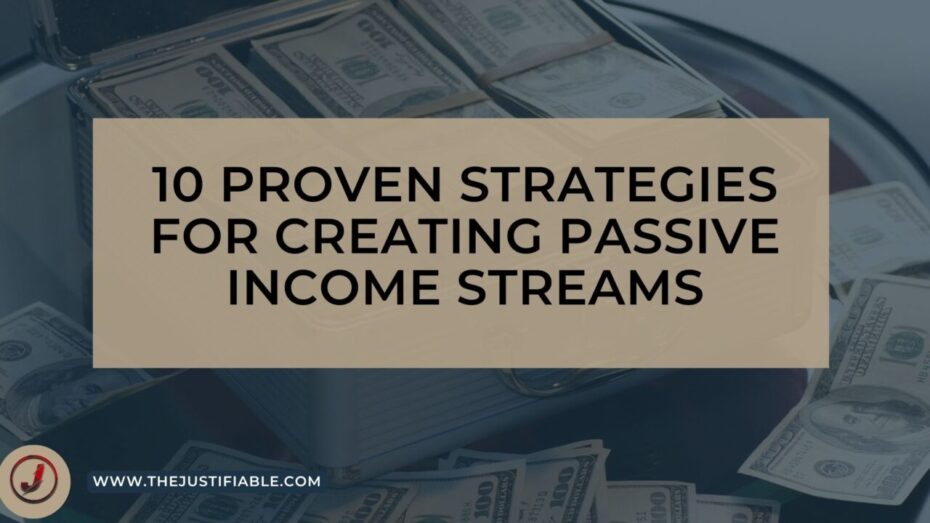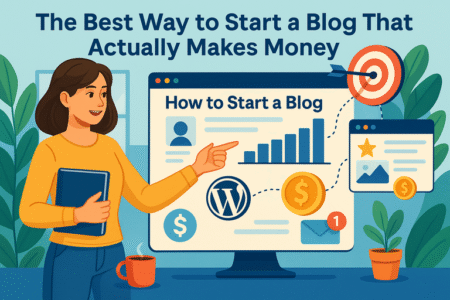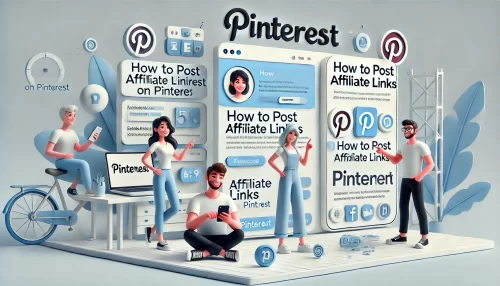Table of Contents
10 proven strategies for creating passive income streams! Passive income is an income stream that generates money without the need for active involvement or constant monitoring.
These income streams are built through smart investments, creative thinking, and a willingness to put in the initial effort. In this article, we’ll look at ten proven strategies for creating passive income streams that can provide you with financial freedom.
Affiliate Marketing
One of the most popular ways to create passive income is through affiliate marketing. Affiliate marketing is the process of promoting other people’s products and earning a commission for each sale made through your unique referral link.
Affiliate marketing can be done through social media, email marketing, or through a website or blog. It’s important to choose products that are relevant to your audience and provide value to them.
How To Create Passive Income Through Affiliate Marketing
Affiliate marketing is a popular way to create passive income. It involves promoting other people’s products or services and earning a commission for each sale that you generate. Here are some steps to follow when creating passive income through affiliate marketing:
Choose Your Niche
To start with affiliate marketing, it’s important to choose a niche that you’re knowledgeable about and passionate about. This will help you create content that resonates with your target audience and establish yourself as an authority in your niche.
Choose Your Affiliate Programs
Once you’ve chosen your niche, research affiliate programs that are relevant to your niche. Look for programs that offer high commission rates, have a good reputation, and provide quality products or services that your audience will find valuable.
Create Valuable Content
Creating valuable content is key when it comes to affiliate marketing. You can create blog posts, social media posts, videos, or any other type of content that is relevant to your niche and provides value to your audience. Be sure to include your affiliate links in your content, and disclose your affiliate relationships to your audience to maintain transparency.
Build Your Audience
Building your audience is essential when it comes to affiliate marketing. Use social media, email marketing, and other marketing channels to reach and engage with your target audience. Provide them with valuable content, and encourage them to share your content with their friends and followers.
Optimize Your Affiliate Marketing Strategy
As you start generating traffic and earning commissions through your affiliate marketing efforts, it’s important to optimize your strategy. Track your performance, and identify the affiliate programs and content that are generating the most revenue. Use this information to refine your strategy and maximize your earnings.
Stay Compliant with FTC Regulations
When engaging in affiliate marketing, it’s important to stay compliant with the Federal Trade Commission’s regulations. This includes disclosing your affiliate relationships to your audience and avoiding misleading or deceptive marketing practices.
Finally, generating passive income through affiliate marketing necessitates careful planning and investment. Following these steps will allow you to create a successful affiliate marketing strategy that will provide a consistent source of passive income for years to come.
Remember to carefully select your niche and affiliate programs, create valuable content, build your audience, optimize your strategy, and adhere to FTC regulations.
Dropshipping
Dropshipping is a type of e-commerce business where the retailer doesn’t keep inventory in stock. Instead, the retailer sells products from a third-party supplier and ships the product directly to the customer.
Dropshipping can provide a source of passive income by allowing the retailer to earn a profit on each sale without the need for inventory management or shipping.
How To Create Passive Income Through Dropshipping
Dropshipping is a popular method of creating passive income. It involves selling products through an online store without holding any inventory. Here are some steps to follow when creating passive income through dropshipping:
Choose Your Niche
To start with dropshipping, it’s important to choose a niche that you’re knowledgeable about and passionate about. This will help you create a store that resonates with your target audience and establish yourself as an authority in your niche.
Find Reliable Suppliers
Once you’ve chosen your niche, research and find reliable suppliers who can fulfill your orders. Look for suppliers that offer quality products, competitive pricing, and reliable shipping times.
Create Your Online Store
Create an online store using a platform like Shopify, WooCommerce, or BigCommerce. Choose a theme that suits your niche and customize it to reflect your brand. Ensure that your store is user-friendly, easy to navigate, and has a clear call to action.
Add Products to Your Store
Once your store is set up, start adding products from your chosen suppliers. Optimize your product descriptions and images to make them appealing to your target audience.
Market Your Store
Marketing your store is essential to drive traffic and sales. Use social media, email marketing, and other marketing channels to reach and engage with your target audience. Provide them with valuable content, and encourage them to share your content with their friends and followers.
Optimize Your Store for Conversions
As you start generating traffic and sales through your store, it’s important to optimize your store for conversions. Use analytics to track your performance and identify the products and marketing channels that are generating the most revenue. Use this information to refine your strategy and maximize your earnings.
Provide Excellent Customer Service
Providing excellent customer service is essential to the success of your dropshipping business. Ensure that you respond to customer inquiries promptly, fulfill orders on time, and resolve any issues or complaints efficiently.
Dropshipping requires careful planning and investment to generate passive income. By following these steps, you can create a successful dropshipping business that will provide a consistent source of passive income for many years.
Remember to carefully select your niche and suppliers, build an easy-to-use online store, optimize your products and marketing, and provide excellent customer service.
Email Marketing: A Powerful Tool for Passive Income
Email marketing remains one of the most effective methods of generating passive income. This involves directly contacting potential customers through email and promoting your products, services, or content.
When implemented correctly, it allows you to build lasting relationships with your audience, promote brand loyalty, and drive engagement and conversions.
Understanding Email Marketing
Email marketing, in its simplest form, is the use of email to promote products or services. However, it extends beyond that. It’s about cultivating relationships with your audience by providing them value, whether that’s through informative content, exclusive deals, or timely updates.
A successful email marketing strategy is more than just a sporadic sending of emails. It involves carefully planned, personalized messages, segmented according to your audience’s needs and behavior.
These emails are then sent at strategic times to optimize open rates and conversions. As a passive income stream, the initial work in setting up an effective email marketing system can lead to substantial revenue generation over time.
Building a Strong Email List
The strength of your email marketing efforts is directly proportional to the quality of your email list. Building a strong email list is about more than just quantity; it’s about attracting the right kind of subscribers – those who are genuinely interested in your brand, products, or services.
The first step in building an email list is providing a compelling reason for your audience to subscribe. This can be an exclusive piece of content (like an e-book or a webinar), a special discount, or regular valuable updates. Employing opt-in forms on your website or blog can help capture your visitors’ email addresses.
Next, segment your email list based on various factors like demographics, past purchases, and browsing behavior. This allows you to send targeted, personalized emails, increasing engagement, and ultimately, conversions.
Crafting High-Converting Emails
The core of email marketing lies in crafting high-converting emails. These are emails that encourage your subscribers to take a specific action, such as buying a product, signing up for a webinar, or sharing your content.
A high-converting email typically has an attention-grabbing subject line, personalized content, clear and compelling call-to-action, and a visually appealing design. It’s crucial to maintain a balance between promotional content and value-adding content to maintain subscriber engagement and trust.
Conducting regular A/B tests on various elements of your email, like the subject line, email design, and call-to-action, can help improve your conversion rates over time.
Ad Monetization: Earning Money while You Sleep
Ad Monetization is a popular passive income strategy that can help you earn revenue around the clock. Whether you have a blog, website, or app, effective ad monetization can convert your online traffic into a sustainable source of income, allowing you to make money even while you sleep.
What is Ad Monetization?
Ad Monetization is the process of earning revenue by placing advertisements on your online platform, such as a website, app, or blog. In essence, you’re leasing out space on your platform to advertisers. This process can take various forms, including display ads, sponsored content, or affiliate marketing.
Two primary models govern how you earn money from these ads: Cost Per Click (CPC) and Cost Per Impression (CPM). In the CPC model, you earn revenue every time a visitor clicks on the ad. Meanwhile, in the CPM model, you get paid for every 1,000 impressions the ad receives. Which model is most profitable for you will depend on factors like your website traffic, the ad content, and audience behavior.
Selecting the Right Ad Platform
Choosing the right ad platform is a crucial aspect of effective ad monetization. The best platform for you will depend on factors like your niche, audience demographics, and the nature of your content.
Google AdSense is one of the most well-known ad platforms, known for its reliability and extensive network of advertisers. However, there are many other platforms, such as Media.net, Infolinks, and Propeller Ads, each with its unique strengths.
It’s essential to research each platform’s payout rates, payment terms, ad formats, and ease of use before making a decision. Additionally, consider experimenting with multiple platforms to compare their performance and identify the one that works best for you.
Optimizing Ad Placement for Maximum Revenue
Ad placement can significantly impact your ad revenue. Ads placed in high visibility areas of your website are likely to get more impressions and clicks, leading to higher earnings.
Common high-performing ad placement areas include the header of your website, at the end of blog posts, and in the sidebar. However, remember to balance ad placement with user experience. Too many ads or poorly placed ads can deter users from your site.
Using heat maps can help identify where users spend most of their time on your site, helping you place your ads strategically. A/B testing can also be beneficial in identifying the ad placement that generates the highest revenue.
Monitoring and Adjusting Your Ad Strategy
Finally, effective ad monetization isn’t a set-and-forget strategy. To maximize your ad revenue, it’s essential to regularly monitor your ad performance and make adjustments as necessary.
Keep a close eye on metrics like click-through rate (CTR), revenue per thousand impressions (RPM), and overall ad revenue. Identify trends and patterns in these metrics, and adjust your ad placement, ad content, or even the ad platform based on your observations.
Remember, the key to successful ad monetization is continuous testing and optimization. By doing so, you can create a sustainable source of passive income that earns you money around the clock.
Blogging: Turning Passion into Profit
Blogging remains one of the most popular methods of generating passive income online. With the right strategy, it allows you to turn your passion into profit, creating a revenue stream from something you love.
This section will guide you on choosing your blogging niche, creating quality content, optimizing your blog for SEO, and finally, monetizing your blog.
Choosing Your Blogging Niche
Choosing your blogging niche is the first critical step towards building a profitable blog. Your niche should ideally be at the intersection of something you are passionate about, something you are knowledgeable about, and something with a reasonable audience interest.
The right niche will make blogging an enjoyable endeavor for you and resonate with your target audience. You can use keyword research tools like Link Assistant to gauge the popularity of different niches and identify potential gaps in the market. But remember, while a popular niche can mean a large audience, it can also mean high competition. Striking the right balance is key.
Creating Quality Content
The heart of your blog is its content. It’s what attracts visitors, keeps them engaged, and brings them back for more. Quality content is original, informative, engaging, and provides value to the reader. It is also regularly updated to keep the blog fresh and relevant.
The content should reflect your unique voice and perspective, and the style should be consistent throughout your blog. Use a mix of content types, like articles, infographics, videos, and podcasts, to keep things interesting for your audience. And always prioritize quality over quantity.
SEO Optimization for Blogs
Search Engine Optimization (SEO) is a critical component of a successful blog. It involves optimizing your blog and its content to rank higher in search engine results, thereby attracting more organic traffic.
Key elements of SEO include keyword optimization, where you include relevant keywords naturally in your content; meta descriptions, which summarize your content for search engines; and backlinks, which can boost your blog’s authority and search ranking.
You should also pay attention to technical SEO aspects, such as ensuring your blog loads quickly, is mobile-friendly, and has a clean, easy-to-navigate design.
Monetizing Your Blog
Once you have a blog with quality content and steady traffic, it’s time to monetize it. There are several ways to do this.
Ad monetization, as discussed earlier, involves placing ads on your blog and earning revenue from impressions or clicks. Affiliate marketing involves promoting third-party products in your blog and earning a commission for every sale made through your referral.
You can also create and sell your products, such as e-books, online courses, or merchandise. Another option is sponsored content, where companies pay you to write posts promoting their products or services.
Remember, successful blogging and blog monetization require time, patience, and consistency. But with the right strategy and effort, blogging can become a lucrative source of passive income, allowing you to earn money while doing something you love.
Freelancing: Flexible Work with Potential for Passive Income
Freelancing presents a great opportunity to earn money on your terms. Moreover, with the right strategies, you can convert your freelancing work into a source of passive income.
This section will guide you through selecting your freelancing skills, setting up a successful freelancing profile, creating courses or guides for passive income, and outsourcing and automating your freelance work.
Selecting Your Freelancing Skills
The first step towards successful freelancing is identifying and honing your skills. Your skills are your product in the freelancing world, and the quality of your work will largely determine your success.
Consider your strengths and interests, and identify the skills you can offer as a freelancer. These could be anything from writing and graphic design to programming and marketing. Once you’ve identified your skills, consider getting additional training or certifications to boost your expertise and credibility. Remember, the key is to continuously update and upgrade your skills in line with market trends.
Setting Up a Successful Freelancing Profile
Your freelancing profile serves as your online resume and is often the first impression potential clients get of you. A successful profile effectively showcases your skills, experience, and what you can offer to clients.
Start with a compelling headline and summary that capture your key skills and strengths. Then, detail your experiences, services, and rates clearly. Don’t forget to showcase your best work in your portfolio, as this often influences a client’s decision. Lastly, ensure you present a professional image – from your profile photo to your communication style.
Passive Income through Creating Courses or Guides Based on Your Skills
Freelancing isn’t just about trading your time for money; it can also be a source of passive income. One effective way of achieving this is by creating and selling courses or guides based on your skills.
If you’re an expert in a high-demand area, consider creating an online course or an e-book that shares your knowledge and expertise. Platforms like Udemy, Coursera, or Amazon Kindle make it easy to create, host, and sell your courses or e-books, offering you a steady stream of income long after the initial work of creation.
Outsourcing and Automating Freelance Work
Another strategy for generating passive income from freelancing is through outsourcing and automation. As you grow in your freelancing career, you may find that you have more work than you can handle, or tasks that you’re not particularly skilled at or interested in.
In such cases, consider outsourcing these tasks to other freelancers. You can charge a premium to your clients and pay a portion of it to the freelancers doing the work, earning you a profit.
Automation is another strategy. For instance, you can automate administrative tasks like invoicing and scheduling using software tools, freeing up your time to focus on more profitable tasks.
Remember, while freelancing requires an active investment of your time initially, with the right strategies, it can become a source of passive income, giving you flexibility and financial independence.
Social Media: Leveraging Followers for Passive Earnings
Social media has revolutionized the way we connect with others and share information, and it has also created new avenues for income generation. With the right strategies, you can leverage your social media followers to create passive earnings.
This section will guide you through choosing your social media platforms, building an engaging social media presence, monetizing your social media, and growing and maintaining your following.
Choosing Your Social Media Platforms
The first step to successful social media monetization is choosing the right platforms. This will depend on your skills, interests, and where your target audience is most active.
For instance, Instagram and YouTube are ideal for visual content like photos and videos, while Twitter is great for short, timely posts and interactions. LinkedIn is best suited for professional content, while Facebook is a versatile platform that accommodates a variety of content types.
The key is not to spread yourself too thin. Choose one or two platforms where you can focus your efforts and build a strong presence.
Building an Engaging Social Media Presence
An engaging social media presence is crucial to attract and retain followers. This means creating high-quality, original content that resonates with your audience and encourages interaction.
Post regularly to keep your followers engaged and your content appearing in their feeds. Use a variety of content types, including images, videos, articles, and stories, to keep your content fresh and interesting.
Engage with your followers by responding to comments, asking for feedback, and encouraging discussion. Remember, social media is a two-way street, and building relationships with your followers is key to your success.
Monetizing Your Social Media through Partnerships and Sponsored Posts
Once you’ve built a substantial and engaged following, you can start to monetize your social media presence.
One of the most common ways is through partnerships and sponsored posts. Brands are always on the lookout for influencers who can promote their products or services to a targeted audience. They’re willing to pay for posts, stories, or videos that showcase their offerings.
Ensure any partnerships align with your brand and audience interests to maintain credibility and trust with your followers. Always disclose sponsored content to comply with regulations and maintain transparency with your audience.
Growing and Maintaining Your Social Media Following
Growing and maintaining your social media following requires consistent effort. Posting regular, engaging content is key. Also consider leveraging hashtags, collaborations with other influencers, and paid promotions to expand your reach.
Maintaining your following involves continuing to provide value to your audience. This might mean diversifying your content, seeking direct feedback from followers, or exploring new trends or platforms.
Remember, the size of your following is less important than its engagement and loyalty. A smaller, engaged audience can be more valuable than a larger, indifferent one.
In summary, social media provides a unique opportunity to monetize your online presence. With the right strategies, you can create a sustainable source of passive income while interacting with your followers and sharing content you’re passionate about.
Rental Properties
Owning rental properties can provide a steady stream of income in the form of rental payments. However, being a landlord can be a challenging job, and there are numerous factors to consider before investing in rental properties. Some of the key considerations include location, property type, and tenant screening processes.
How To Create Passive Income Through Rental Properties
Investing in rental properties can be a great way to create passive income streams. By owning rental properties, you can earn money in the form of rental payments without having to actively work for it. Here are some steps to follow when creating passive income through rental properties:
Determine Your Investment Strategy
Before investing in rental properties, it’s important to determine your investment strategy. Are you looking for long-term investments or short-term gains? Do you want to invest in single-family homes or multi-unit properties? Answering these questions will help you determine the type of properties you should invest in.
Find the Right Location
Location is crucial when it comes to rental properties. Look for properties in desirable neighborhoods with low crime rates and good schools. Consider the local job market and economic conditions, as these factors can impact the demand for rental properties.
Determine Your Budget
Determine how much money you have to invest in rental properties. Consider the cost of purchasing the property, any renovations or repairs that need to be made, and ongoing expenses such as property taxes and maintenance costs.
Screen Potential Tenants
Screening potential tenants is essential when it comes to rental properties. Conduct thorough background checks to ensure that tenants have a good rental history and can afford to pay rent on time. Consider working with a property management company to handle tenant screening and other property management tasks.
Set a Competitive Rental Price
Setting a competitive rental price is important when it comes to attracting tenants. Research the local rental market to determine the going rental rates in the area. Set a rental price that is competitive but also covers your expenses and provides a return on your investment.
Hire a Property Management Company
Hiring a property management company can make owning rental properties more manageable. Property management companies can handle tenant screening, lease agreements, rent collection, and maintenance and repair tasks. They can also provide you with valuable advice on rental rates and investment strategies.
Maximize Rental Income
Maximizing rental income can help you create a steady stream of passive income. Consider offering amenities like on-site laundry facilities or storage units to attract tenants. You can also offer incentives like a discount on rent for tenants who sign longer lease agreements.
Stay Compliant with Local Laws and Regulations
Owning rental properties comes with legal and regulatory requirements that must be followed. Stay up-to-date with local laws and regulations regarding rental properties, including landlord-tenant laws, fair housing laws, and building codes.
Passive income from rental properties necessitates careful planning and investment. Following these steps will allow you to build a portfolio of rental properties that will provide a consistent source of passive income for years to come.
To ensure your success, keep up to date with local laws and regulations and collaborate with professionals such as property management companies.
Dividend Stocks
Dividend stocks are stocks that pay out a portion of their earnings to shareholders in the form of dividends. This type of investment can provide passive income in the form of regular dividend payments. However, it’s important to note that dividend stocks can be volatile, and it’s essential to do your research before investing.
How To Create Passive Income Through Dividend Stocks
Dividend stocks are stocks that pay regular dividends to their shareholders. Dividends are a portion of a company’s profits that are distributed to shareholders, usually on a quarterly basis.
Investing in dividend stocks can be a great way to create passive income. Here are some steps to follow when creating passive income through dividend stocks:
Choose Your Stocks
To start with dividend stocks, it’s important to choose the right stocks. Look for companies that have a track record of paying regular dividends, increasing their dividend payouts over time, and have a solid financial position. You can research dividend stocks using online resources such as dividend.com or Seeking Alpha.
Invest in Dividend Stocks
Once you’ve chosen your dividend stocks, invest in them through a brokerage account or a robo-advisor. You can choose to invest in individual stocks or exchange-traded funds (ETFs) that hold a diversified portfolio of dividend stocks. Ensure that you understand the risks and rewards of investing in dividend stocks and have a long-term investment strategy.
Reinvest Dividends
Reinvesting your dividends is a great way to compound your returns and increase your passive income over time. Many brokers offer dividend reinvestment plans (DRIPs), which automatically reinvest your dividends back into the stock. This allows you to accumulate more shares and increase your dividend income over time.
Monitor Your Portfolio
It’s important to monitor your dividend stock portfolio regularly. Keep track of your dividends, portfolio performance, and any changes in the market or the company’s financial position. Adjust your portfolio accordingly and rebalance it periodically to ensure that it remains diversified and aligned with your investment goals.
Manage Your Taxes
Dividend income is taxed differently than other types of income. Ensure that you understand the tax implications of your dividend income and manage your taxes accordingly. Consider using tax-advantaged accounts such as individual retirement accounts (IRAs) or 401(k)s to reduce your tax liability.
Passive income from dividend stocks necessitates careful research, investment, and monitoring. By following these steps, you can create a diversified portfolio of dividend stocks that will provide a steady stream of passive income for many years.
Remember to pick your stocks wisely, to invest on a regular basis, to reinvest your dividends, to keep track of your portfolio, and to manage your taxes.
Online Courses
Online courses can provide an excellent source of passive income. By creating a course on a topic you’re knowledgeable about, you can earn money each time someone purchases your course. Online platforms like Udemy and Datacamp can help you reach a wider audience and provide access to resources to help you create a successful course.
How To Create Passive Income Through Online Courses
Creating online courses can be a great way to generate passive income. Online courses offer a flexible and scalable business model that allows you to share your expertise with a global audience. Here are some steps to follow when creating passive income through online courses:
Choose Your Topic
Start by choosing a topic that you’re passionate about and that aligns with your expertise. It’s important to select a topic that has a market demand and is not already saturated with courses. Look for topics that are trending, in-demand, and solve a specific problem that your target audience is facing.
Create Your Content
Create high-quality content that provides value to your audience. Your content should be well-researched, informative, and engaging. Consider using a mix of media such as videos, text, and graphics to make your content more engaging and accessible. You can create your content using tools such as Loom, Camtasia, or Canva.
Choose Your Platform
Choose a platform to host and sell your online course. Popular platforms include Udemy, Coursera, Teachable, and Kajabi. These platforms provide tools for creating and hosting your course, managing payments, and marketing your course to a global audience.
Promote Your Course
Promote your course through social media, email marketing, and paid advertising. Consider using a combination of organic and paid promotion methods to reach your target audience. Offer a free trial or a money-back guarantee to encourage people to try your course.
Monitor Your Sales and Feedback
Monitor your course sales and feedback regularly. Use analytics tools provided by your platform to track your course performance, student engagement, and satisfaction. Use feedback from your students to improve your course content and delivery.
Scale Your Business
Once you’ve created a successful online course, you can scale your business by creating additional courses or offering coaching and consulting services. Consider building a brand around your expertise and leveraging it to generate more passive income.
Ending
Creating passive income streams can provide financial freedom and the ability to live life on your own terms. By investing time and effort into building these income streams, you can create a reliable source of income that provides flexibility, security, and the ability to pursue your passions.
Whether you choose to create passive income through rental properties, affiliate marketing, dropshipping, dividend stocks, or online courses, the key is to choose a strategy that aligns with your interests and skills, and to be patient and persistent in your efforts.
Remember that creating passive income streams requires hard work, dedication, and discipline. It’s important to set clear goals, develop a solid plan, and take consistent action towards achieving those goals. While there may be challenges and setbacks along the way, staying focused on your vision and taking calculated risks can lead to significant rewards in the long run.
So if you’re ready to take control of your financial future and create passive income streams that provide financial stability and freedom, start by taking action today. Research different strategies, invest in your education and skills, and stay committed to your goals.
With dedication and perseverance, you can create a life of abundance and fulfillment, free from the constraints of traditional employment and financial insecurity.






